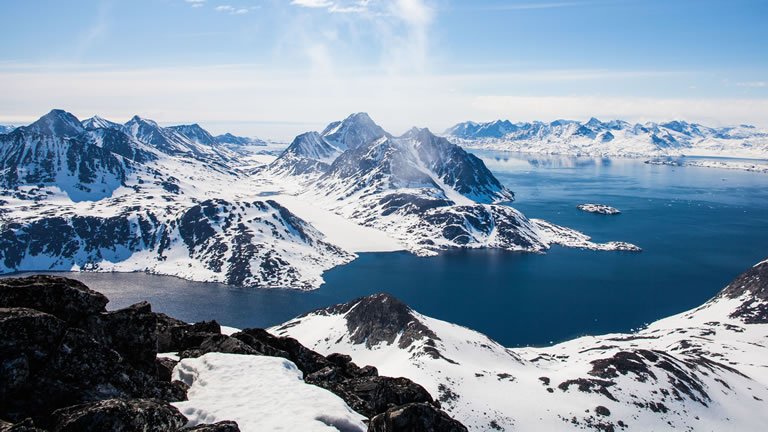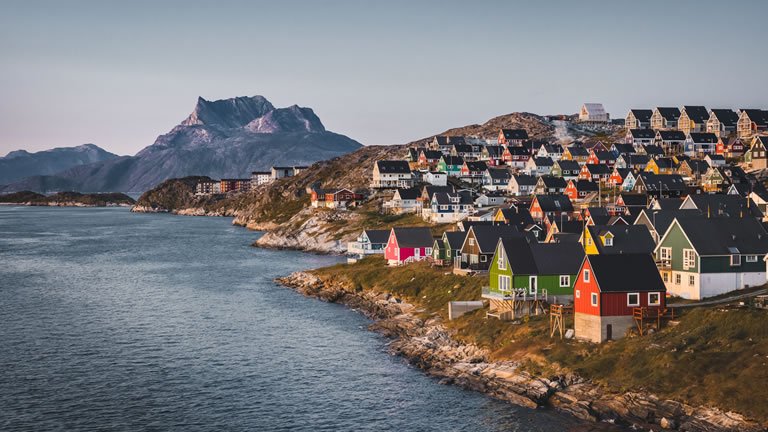Overview
Itinerary
Your adventure starts in the world’s northernmost capital. Reykjavik has traditional charm coupled with a cosmopolitan outlook. This small, safe city is the perfect size for a walking tour, and is packed full of art, culture and history. We recommend you make the most of being here before or after your voyage, if you have the time.
Take a stroll along Laugavegur, the main shopping street, with its boutiques and outdoor shops, or head to the architecturally striking Hallgrimskirkja Cathedral. Art lovers can visit the Reykjavik Art Museum, the National Gallery and the many smaller galleries and museums dotting the city.
Stopping off at the National Museum, the Saga Museum and the Maritime Museum will fill you in on Iceland’s history. Pack your swimsuit if you fancy a dip in one of the city’s 18 swimming pools, many of which have saunas and hot tubs.
From Reykjavik you’re just hours away from geysers, glaciers, hot springs and waterfalls – the name actually means ‘Smoky Bay’ due to the rising steam from the surrounding geothermal features. Why not book a Pre-Programme with us and spend some extra days discovering Iceland’s famed Golden Circle, a circuit of natural highlights including waterfalls, national parks and geysers.
MS Fridtjof Nansen awaits you in Reykjavik Harbour. After you check in and collect your complimentary expedition jacket, you’ll have time to settle in your relaxed and stylish cabin. There is a mandatory safety drill just before departure after which you can walk around and explore your new home-from-home and enjoy and the premium onboard experience.
The welcome dinner in the evening ends with a toast by the Captain, wishing everyone an enjoyable adventure. You’ll then meet the Expedition Team and key members of the crew who’ll provide you with information about what to expect on your exciting voyage to Greenland.
Leaving Iceland behind, we’ll sail across the Denmark Strait towards the shores of Greenland. This is the same route that was taken by the Vikings when they migrated there some 1,000 years ago. In fact, we’re following in the wake of Erik the Red, who is said to have been the first European to settle in Greenland, having gone there with his father at age 10.
You’ll have time to relax, get to know your Expedition Team, and check out the onboard facilities of MS Fridtjof Nansen – our state-of-the-art hybrid-powered cruise ship. In the Science Center there will be lectures on a range of topics, preparing you for the adventure ahead. While you’re there, check out the library and the scientific equipment that’s there for you to make use of throughout the voyage.
They’ll also take you through important guidelines from AECO, the Association of Arctic Expedition Cruise Operators. You'll learn how you can help protect wildlife habitats, and the best ways to keep a safe distance from animals and birds so as not to disturb them. Furthermore, they’ll fill you in on the protocol for visiting indigenous Arctic communities in a dignified and respectful way.
If you’re feeling active, you can hit the fitness facilities and get your pulse up. There are both indoor and outdoor gyms, as well as an outdoor 150m running track on Deck 11. Or for a soothing spa session, book a treatment in the Wellness Center. The panoramic sauna offers ‘sightseeing as you sweat’ and there are hot tubs and a heated pool on deck.
Later, why not enjoy a drink in the panoramic Explorer Lounge & Bar and get to know some of your fellow explorers, or just settle into a sofa and watch the rhythmic ocean waves roll by outside.
Due to its colourful houses and photogenic setting, our first port of call is considered one of Greenland’s most beautiful towns. The settlement spreads up the surrounding hills, some of which are quite steep, but it’s worth the effort for the great views.
Qaqortoq is all about arts and crafts, and soon as you step ashore, you’ll see faces and fish carvings in the rocks welcoming you to Greenland. Many locally made handicrafts are available here, from stylish Inuit motif tablecloths and fabrics, to gorgeous glasswork and Greenlandic herbal skincare products.
The area around Qaqortoq has been inhabited since prehistoric times, beginning with the Saqquaq peoples about 4,300 years ago. These first pioneers didn’t leave much of a trace for archaeologists other than a few carving knives and stone drills. The later Dorset culture people were the next group of settlers, and they left more behind, such as their characteristic rectangular peat houses.
Enjoy the beautiful lush green scenery on a walk to a nearby lake. You’ll experience the warmth of the local people first-hand as we are invited into a home for a traditional kaffemik social celebration. Kaffemik is a Greenlandic tradition where you’ll hear stories about the lives of the folks living here, accompanied by lots of cakes, local dishes and pots of coffee. You won’t want to say goodbye!
For a potted look at the history of Qaqortoq, drop into the town’s museum. Inside, you’ll find local Inuit artifacts, as well as natural curiosities such as seal skins and stuffed polar bears, as well as artworks. Before you leave, walk up to one of the bluffs overlooking town where you’ll be treated to an incredible view over the bay.
Kvanefjord is a 30-mile-long fjord in the district of Sermersooq, which means “Place of Much Ice”. The waters extend around six miles inland before branching into three smaller channels, each with a glacier at its head. Kvanefjord is typical of many of the picturesque fjords that can be found up the length of Greenland’s west coast, and yet this pristine and peaceful inlet never fails to amaze.
As we cruise into the fjord, you’ll see the fascinating bergs and semi-submerged pieces of glacier ice – pure white with undertones of cool crystalline blue. These floating works of art are some of Arctic nature’s finest creations, and yet they seem so ephemeral and delicate as they glide gracefully past. Get your camera out and capture some of the exquisite beauty – this is but our first taste of Greenland’s sublime west coast fjords.
We’ll spend the day exploring this amazing waterway, and the Captain together with the Expedition Team will seek out places where it might be possible to head ashore or set out in the expedition boats to take a closer look at the sculpted glacier ice and landscapes. There will be opportunities for scouting out wildlife, either from the boats or on land, or perhaps we’ll be able to stretch our legs and enjoy the beautiful scenery on a nature walk, depending on the weather and ice conditions.
Few people venture into this remote fjord, and we can expect the unexpected on this expedition day as we head into the heart of what is still a relatively unexplored region. Trust the Expedition Team to find the best spots, and let them guide you on a true adventure!
Maniitsoq, a town whose name translates as “The Uneven Place”, is also half-jokingly nicknamed the “Venice of Greenland” due to its location on an archipelago crisscrossed with natural canals. However, unlike Venice, Italy, you won’t see any gondolas here, but you might spot pods of humpback whales from the shore.
Situated beside a bay, the town stands at the mouth of a fjord and attracts anglers, skiers and adventurers from afar. What’s more, there are awe-inspiring views of the surrounding mountains from any vantage point you care to look out from.
Founded in 1755, Maniitsoq has a population of around 2,500, and it was originally called Nye Sukkertoppen by the Danish colonists who built a trading post here. By the 19th century, Maniitsoq had become the main regional hub for reindeer hides, but the occupation of the area goes much further back in time.
People have lived here for over 4,000 years and they left behind artifacts, some of which can be seen in the local museum which is housed in an old Danish colonial-era building. Inside, you’ll find figurines carved from walrus ivory, traditional Greenlandic costumes and many works of art. There are other old buildings adjoining the museum, which used to comprise a blubber station, brewery, bakery and whale oil boiling house, among other things.
Nowadays, Maniitsoq is the sixth largest town in Greenland and welcomes travellers from around the world. It’s a friendly place, and locals will be more than happy to chat and welcome you to their peaceful town. There’s also a couple of restaurants here, if you fancy a local bite to eat.
Spectacularly situated Sisimiut is located 25 miles north of the Arctic Circle in the central coastal area of the Davis Strait. It’s a modern settlement but its roots stretch back in time a long way, with estimates that the area has been settled by Greenlandic peoples for over 4,500 years. Locals are proud of their roots, and old traditions are still alive and well.
Its name translates into “The People at the Fox Holes”, a reference to the many Arctic fox burrows that can be found just outside town. Another animal local to the area is the musk ox whose fur is used to make a local fabric called qiviut – said to be 10 times warmer than sheep wool. You might like to pick up a qiviut scarf, hat, or mittens while you’re here.
With a population of around 5,500 – making it Greenland’s second largest urban area – Sisimiut is an important regional hub and it’s often a stopover point for boats heading between Nuuk and Disko Bay. People come here to enjoy backcountry sports on the ice cap, such as skiing and dog sledding.
The small museum here houses artefacts from excavations of ancient Saqqaq settlements near the town, some as old as 4,000 years. There’s also the Taseralik Cultural Centre, which is the place to go to learn more about the region’s cultural heritage.
If you’re feeling hungry, you’ll find a couple of restaurants and cafés in Sisimiut. Mostly, the dishes are Scandinavian influenced and tend to feature fresh seafood, but you can also just drop in for a coffee and a chat with the owners while you’re here. The popular Restaurant Nasaasaaq in Hotel Sisimiut does takeaways – it’s probably the only place you’re ever likely to find a musk ox and reindeer pizza!
Our journey has now reached Disko Bay, one of Greenland’s major drawcards. The area covers a large coastal stretch of nutrient-rich water packed with small islands and skerries. It was long considered important for its walrus, whale and seal populations which were hunted for their ivory, blubber and fur respectively. Erik the Red is credited as being the first European to venture to the bay, settling in the area in 985 CE.
The small town of Ilulissat is a vibrant hub for adventure seekers who head out onto the polar ice cap, and there are almost as many sled dogs living here as there are people. Ilulissat – meaning simply ‘Icebergs’ – is set in the stunning scenery of the Ilulissat Ice Fjord, a UNESCO World Heritage Site. This beautiful gem of a town is characterised by its colourful houses sitting down by the water.
A short but beautiful hike will take you to the old Inuit settlement of Sermermiut on the northern shore. People lived here from around 4,000 years ago, and the hamlet was excavated as recently as 1983. Walk there along a route that runs partly along a road and partly upon a wooden boardwalk. The view across the ice fjord from Sermermiut is stunning, making this short trek a real must.
Sit and gaze at the enormous icebergs floating in the deep blue waters and sparkling in the sunlight – they really are a photographer’s dream. If you watch them for long enough you might notice them subtly changing colour as they take on different hues of white, grey and blue. Take some time to just relax and observe nature’s artwork in these beautiful surroundings, it really is a picture-perfect kind of place!
We now arrive at the northernmost point in our journey. There are several excellent landing sites in the Vaigat Sound, all of them offering access to untamed landscapes and the chance to get down on your knees and inspect the Arctic flora up close. Our experienced Captain and Expedition Team will take advantage of the current weather and ice conditions to identify the best landing sites and plan our day activity.
The Vaigat Sound is a remote, beautiful and sometimes misty strait connecting Disko Bay and Baffin Bay. When you land on the shore, it’ll feel like you’re one of the first people to ever walk in that part of the world. Perhaps you will be. At Camp Freida, for example, you can trek across the tundra and get a closer look at the way a glacier moves down the saddle between two mountains.
Just as elsewhere around Disko Bay, there’s a chance of wildlife sightings. Several species of whale inhabit in the waters here, including orcas and bowheads, as well as four types of seal: harp, hooded, bearded and ringed.
Perhaps we will take our expedition boats and explore some of the more inaccessible parts of the shore, or maybe – if the waters are favourable – we can venture out in kayaks between the growlers and the icebergs. Otherwise, we’ll head ashore at one of our other locations to photograph the scenery, collect samples for the Science Center, or something else entirely.
It will be local conditions that determine the final programme and the range of activities offered by the Expedition Team, but you can be sure whatever you do will be fun, interesting and adventurous. At the end of today the Captain will turn MS Fridtjof Nansen around and we will commence our southward journey.
In English, Evighed Fjord translates as the “Fjord of Eternity”, and its sheer beauty really will inspire the feeling that you’ve voyaged into a dreamlike realm that could go on forever. Feeding this magnificent fjord is an ice cap that spews colossal white chunks of ice into the cold waters, which then emerge as bergs. Around us are some of the highest mountains in West Greenland with peaks reaching up to 6,600 ft.
Sometimes the mountains are cloaked with mist and only their black skirts are showing, lending an even more ethereal feel to this magical place. The glacier meets the water as a series of crenelated white ridges, punctuated by enchanting crystal blue ice caves. Seen from above, deep fissures harbour tinted blue lakes that look like coloured glass beads. It’s the kind of glacier and fjord combo that should be set to classical music.
Sublime and yet forbidding, Evighed Fjord penetrates some 46 miles inland and its waters are up to 2,300 ft. deep. Its source is the Maniitsoq ice cap, a huge block that’s cut off from the rest of the Greenland ice sheet. Due to the harsh nature of the terrain, the only settlements in this region are tiny fishing hamlets clinging to the shores.
As this is an expedition cruise, we’ll seek out the best places in the fjord based on the local weather and ice situation. Of course, we’ll remain on the lookout for wildlife, whether in the form of whales, seabirds or land mammals, and aim to set out on foot on a nature walk. Conditions on the day will determine the final programme and the range of activities offered by the Expedition Team.
Nuuk sits at the mouth of a system of fjords, and the first thing you’ll notice about Greenland’s capital is how colourful the buildings are, with red, green, blue and yellow houses standing out against the icy black and white backdrop of the mountains. Nuuk was founded in 1728, which makes it the oldest settlement in the nation, and although it’s classed as a city, fewer than 18,000 people call it home.
Today, Nuuk is a place where old and new traditions meet, from the picturesque old buildings dotting the edge of the fjord, to the ultra-modern architecture of the Greenlandic Parliament and the wave-shaped Katuaq Cultural Centre, inspired by the Northern Lights. You can visit the oldest building in Greenland at Hans Egede’s House, constructed in 1721 by the Norwegian missionary who is credited with founding the city.
The red-painted Nuuk Cathedral, which features a typical Lutheran clock tower and steeple, is also worth a visit. Drop by the Greenland National Museum to see the well-preserved – if somewhat discomfiting – Qilakitsoq mummies, or admire local paintings at the Nuuk Art Museum, the only private arts and crafts museum in the country.
We’ll also be offering a long nature walk through Paradise Valley and around Mt. Lille Malene as part of an optional excursion. As you follow a path formed by old reindeer tracks, you’ll be treated to splendid views of the Greenlandic coast and will pass by a small lake and some natural springs.
There’s a range of eateries in Nuuk to satisfy all tastes, some of them featuring local delicacies such as musk ox, seal soup and snow crab. If you’d rather just have a coffee, there are several excellent cafés that serve hot drinks and snacks such as burgers and Danish pastries.
Do you like to visit ghost towns? Ivittuut is exactly that – a mining outpost of long-forgotten spectres, some old and some even older. This was once a busy cryolite mining station, but nowadays the only inhabitants you might see are wandering muskoxen grazing the overgrown grass around the abandoned buildings.
Amazing at is sounds, Ivittuut once played a key role in history, arguably allowing the Allies to win the Second World War. At the time it was the largest cryolite mine in the world – cryolite being a naturally occurring rare mineral used in the production of aluminium alloys – and when Denmark was invaded, the US secretly stationed 500 troops here to prevent the supplies falling into German hands.
This strategy prevented the German forces from using the rare cryolite to manufacture their fighter planes, giving the Allies the upper hand at a pivotal point in the war. Instead, the cryolite was shipped to the UK and used to manufacture aircraft that fought in the Battle of Britain. If it were not for this move, the outcome of the war could have been very different.
Rewinding history further to a time long before the miners arrived, Norsemen settled in this area more than a thousand years ago. Alas, no trace of them remains. Ivittuut is believed to have been the last Viking settlement in Greenland, but was also the first to be abandoned, for reasons that can only be speculated upon.
It’s an unforgettable experience visiting Ivittuut, and the abandoned buildings and lonely cemetery contrast starkly with the surrounding natural beauty. Wander around these eerie yet photogenic ruins today and you’ll see decaying structures and scattered, rusting machinery. It’s difficult to imagine how crucial this small outpost was at a key point in our history.
Be prepared to witness at some of the most incredible panoramas on the planet as we cruise into Prince Christian Sound. The 60-mile waterway is surrounded by sharp-peaked granite mountains, some reaching up to 7,200 ft. in height. Marvel at the maze of geological patterns in the rock faces, from deep cracks and crevasses to lines of black lichen that seem to seep from the mountain like paint.
The muted greys and rusted greens of the mountains stand in contrast to the bright white of the glaciers. These slow-moving ice masses grind their way from the enormous Greenlandic Ice Sheet and flow straight into the sound, calving white-blue icebergs of all sizes, shades, and shapes. You’ll understand why 15th century Italian explorer John Cabot famously described Prince Christian Sound as ‘a river of melted ice’.
There are only two signs of human life here: the weather station built by the US during WWII and now used by civil aviation, and the colourful houses of the 100-strong fishing and hunting village of Aappilattoq, which when translated from Greenlandic means ‘Sea Anemone’. You may see ringed seals and bearded seals on the ice, while the likes of Glaucous Gulls and Black Guillemots nest in the steep cliffs. Minke and humpback whales may make an appearance too, although they tend not to swim into the narrow stretches of the sound, preferring the wider sections at the entrance.
Navigating Prince Christian Sound is only possible in summer when the sea ice is less. However, conditions on the day may mean our route is still barred. If that does happen, don’t worry – such a thing is not unexpected on an expedition into a true wilderness area like this. We may instead sail towards Nunap Isua, otherwise known as Cape Farewell, the splendid southernmost point of Greenland.
After exploring the amazing beauty of Greenland, we set our course back for Iceland. Spend the days at sea recapping your experiences with new friends, studying nature in the Science Center, sitting in on a lecture or two, or just relaxing on deck. Look out for the sea birds which often follow our ship, or maybe see if you can spot some whales.
The route back ‘home’ is likely the same one those last Vikings took when they abandoned their experiment in living on Greenland by the 15th century. Why did they leave? Historians can’t agree, but it seems likely they tried to live like European farmers in an environment that wouldn’t support their cows, sheep and pigs. If only they had taken advice from the Inuit Greenlanders, their descendants might still be there today!
Before we arrive in Reykjavik, why not treat yourself to a visit to the Wellness Center and Spa or spend some time in the panoramic sauna looking out to sea. And there’s always the on-deck hot tubs and heated swimming pool if you feel like taking a dip. Don’t forget, with three restaurants on board, there’s bound to be something you haven’t tried yet, so drop by and give your tastebuds one last treat this evening.
As you reflect on your voyage, you may now appreciate what a precious place Greenland is. From the delicate ecology of the fjord systems, and the ethereal elegance of the floating ice and glaciers, we hope that the beauty you encountered has made its mark on you and that your expedition cruise has been a life-changing experience.
MS Fridtjof Nansen will arrive back in the Icelandic capital early in the morning. Once you have disembarked, why not check out some of the things you might have missed in this charming and compact city before our voyage began.
We are sure you will have had an incredible experience exploring Greenland’s west coast with us, and we hope to see you again in the future for more adventures.
If you want to discover more of Iceland, why not add on one of our Post-Programmes before you head home, or simply extend your stay to enjoy Reykjavik and the surrounding geothermal attractions.
Life Onboard MS Fridtjof Nansen
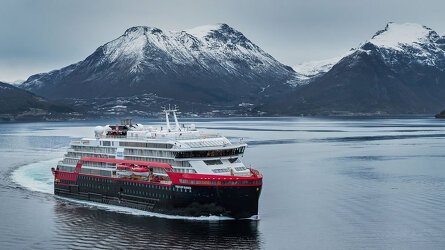
Step aboard this hybrid-powered expedition ship to explore remote corners of the globe in complete comfort. Read more

Your dedicated team deliver an educational onboard program and exciting shore excursions to enrich your expedition. Read more

Step into the Expedition Team's headquarters and enjoy specialist lectures and interactive workshops. Read more

Dine on international dishes and menus inspired by Hurtigruten's Norwegian heritage in the three onboard restaurants. Read more
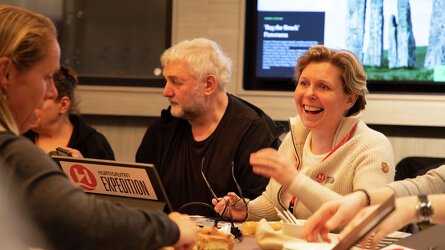
Feel right at home with a sense of comfort and contentment as Hurtigruten share with you the sentiment of 'hygge'. Read more
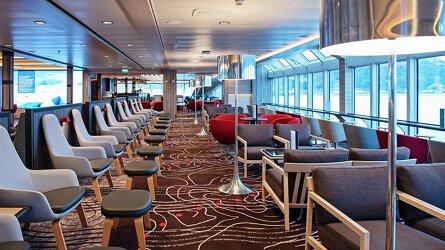
MS Fridtjof Nansen takes the scenic route, and is equipped with viewing spaces to enjoy the views in any weather. Read more

Availability Click on prices below to view cabin upgrades and details
Tour & cruises prices are per person. Prices shown have savings applied, are subject to availability and may be withdrawn at any time without notice. Prices and trip information are correct at the time at this point in time, however are subject to confirmation at the time of booking and are subject to change by Hurtigruten. For cruise itineraries, cabin images are sourced from Hurtigruten. These should be treated as indicative only. Cabin inclusions, upholsteries and room layout may differ to the image(s) shown depending on the ship selected and your sailing dates.
Similar Cruises

17 Days Reykjavik Reykjavik
Operated By: Hurtigruten
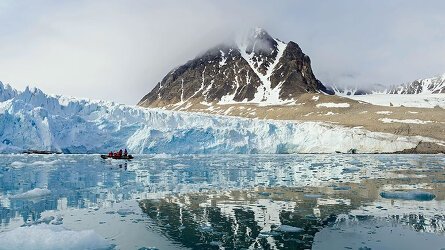
16 Days Oslo Reykjavik
Operated By: Hurtigruten
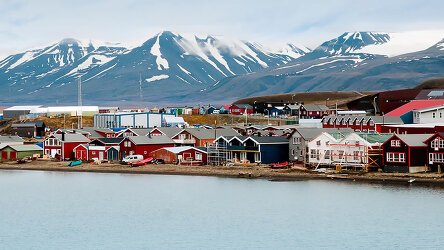
16 Days Oslo Reykjavik
Operated By: Hurtigruten
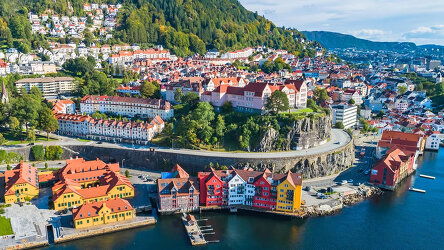
16 Days Oslo Bergen
Operated By: Hurtigruten

